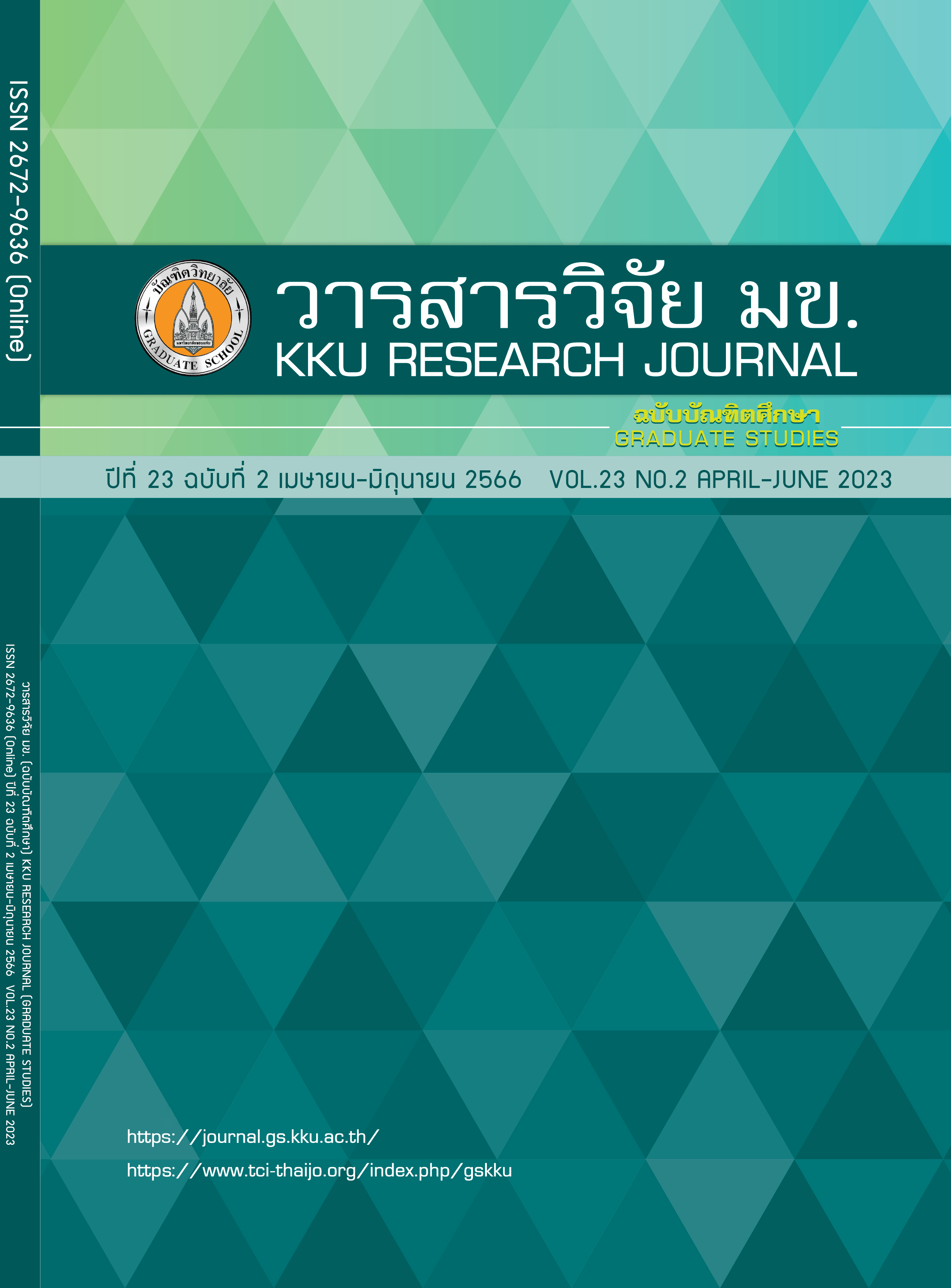Greenhouse Gas Emissions Assessment of Construction Waste in the Mass Rapid Transit Orange Line Construction Project (Thailand Cultural Center–Min Buri Section)
Keywords:
Construction waste, Carbon dioxide equivalent, Railway constructionAbstract
The construction materials are the main of the construction process, but the nature of every construction project inevitably generated waste or scrap material from construction process, all of these scrap materials cause unlimited environmental problems, one of them is the problem of greenhouse gas emissions. This research focuses on greenhouse gas emissions assessment from construction wastes in railway construction project, to awareness of the problem of generated construction waste. The results of this research of construction waste during of January 2018 to December 2021 showed that the year 2019 in the past, this is 49.93 percent of most construction waste in the year, because this year Is the main construction phase, it requires a high amount of effort, cost and resources. And the results of greenhouse gas emissions assessment following the guidelines of the Intergovernmental Panel on Climate Change showed that the construction waste from tunnels and underground stations has highest greenhouse gas emissions equal to 277,441.96 tons of CO2e per kilometer, accounted for 93.99 percent, from total greenhouse gas emissions 295,171.86 tons of CO2e per kilometer. The research suggested further study to extend the scope to cover the whole life cycle of the construction including the use stage and the end of life stage. ECO-efficiency should be considered for more definitive conclusions.
References
Mass Rapid Transit Authority of Thailand, A State Enterprise Under Supervisor of Minister of Transport. Report on the implementation of environmental impact prevention and correction measures and environmental impact monitoring measures, The Mass Rapid Transit Orange Line Construction Project (Thailand Cultural Center - Lumsumlee - Min Buri Section). PMCSC2. 2021. Thai.
Wichittra S. Waste Management in Environmental Impact Reduction of the Bangsue - Rangsit Railway: A Case Study of Donmueng Station. M.S. thesis, Department of Engineering and Business Management, Faculty of Engineering, Thammasat University. 2016. Thai.
Kawee W, Seksan P. Solid Waste Management from BTS Sky Train Construction (A Perspective of Contractors). RMUTP Research Journal. 2013; 7(1): 28-32. Thai.
Chokdee Y, Tortrakun Y, Thippawan B. Construction Waste Management for Sustainable Environment. Modern Management Journal. 2011; 9(1): 56-68. Thai.
Pollution Control Department. Summary of Thailand Pollution Situation. [Online]. 2021. Available from: http://www.pcd.go.th
The United Nations Environment Programme. Sustainable Consumption & Production Branch: Resource Efficient and Cleaner 895 Production. [Online]. 2020. Available from: http://www.unep.fr/scp/cp/
Dean B, Dulac J, Petrichenko K, Graham P. Towards zero-emission efficient and resilient building: Global status report 2016. Global alliance for Building and Construction (GABC). France. 2016.
Intergovernmental Panel on Climate Change. Guidelines for national greenhouse inventories. World book. Intergovernmental Panel on Climate Change. France. 2007.
Chalita S, Thanutyot S. Comparative Greenhouse Gas Evaluation of House Construction: A Conventional House versus an Interlocking Block House. The Journal of KMUTNB. 2020; 30(4): 570-577. Thai.
Thai greenhouse gas management organization. The Guidelines of product carbon footprint assessment. Carbon Label and Carbon Footprint for Organization. Bangkok: Thai publisher; 2015. Thai.
National Metal and Materials Technology Center (MTEC). Thai National Life Cycle Inventory Database. [Online]. 2021. Available from: http://thaicarbonlabel.tgo.or.th
Intergovernmental Panel on Climate Change (IPCC). IPCC Guidelines for National Greenhouse Gas Inventories: Vol. 5 Waste. [Online]. 2021. Available from: https://www.ipcc-nggip.iges.or.jp/public/2006gl/vol5.html
Intergovernmental Panel on Climate Change (IPCC). IPCC Data - Emission Factor Database (EFDB). [Online]. 2022. Available from: https://www.ipcc-nggip.iges.or.jp/EFDB/main.php
Narong L. Construction Management. 3rd ed. Administrative Correspondence. Faculty of Engineering, Khon Kaen University, Khon Kaen, Thailand. 2012.
Rory B. Project Management. 4th ed, London: John wiley & sons. 2003.
William R. A Guide to the Project Management Body of Knowledge. 6th ed. Project Management Institute. 2018.
Brenda C, Alissa K. Life cycle greenhouse gas assessment of infrastructure construction of California's high-speed rail system. Transportation Research Part D. 2011; 16(6): 429-434.
Lee JY, Lee CK, Chun YY. Greenhouse gas emissions from high-speed rail infrastructure construction in Korea. Transportation Research Part D. 2020; 87: 102514.
James A, Pritchard JA, John P. Understanding the contribution of tunnels to the overall energy consumption of and carbon emissions from a railway. Transportation Research Part D 65. 2018; 65: 551-563.
Sakdirat K, Jessada S, Shuonan Y. Global warming potentials due to railway tunnel construction and maintenance. Applied Sciences. 2020; 10(18): 6459.
Hathaikarn H. Energy Consumption and Greenhouse Gas Assessment during Life Cycle of Animal Laboratory Building in Chiang Mai University. M.S. thesis, Department of Energy Engineering, Faculty of Engineering, Chiang Mai University. 2014. Thai.
Koroneos A, Dompros T, Loizidou M. Life cycle assessment of an office building in Greece. Journal of School Chemical Engineering. 2007.
Eléonore L, et al. Green economy and related concepts: an overview. Journal of Cleaner Production. Elsevier. 2016; 139: 361-371.
Asif M, Muneer T, Kelly R. Life Cycle Assessment: A case study of a dwelling home in Scotland. Journal of Science Direct Building and Environment. 2007; 42: 1391-1394.
Downloads
Published
Issue
Section
License
Copyright (c) 2023 KKU Research Journal (Graduate Studies)

This work is licensed under a Creative Commons Attribution-NonCommercial-NoDerivatives 4.0 International License.



